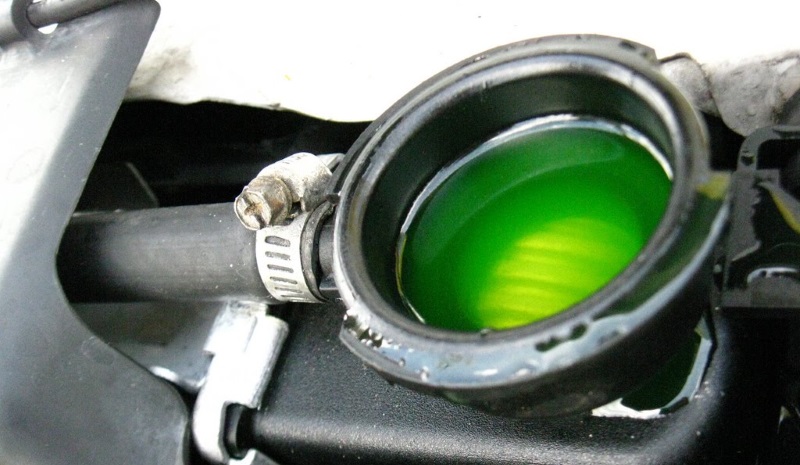How to fix coolant mixing with engine oil? When coolant mixes with engine oil, it can lead to serious engine damage and performance issues.

Identifying and resolving this problem promptly is essential to prevent further complications or damage. In this article, we will discuss the causes, signs, and step-by-step instructions to fix coolant mixing with engine oil effectively.
Understanding the Issue: Coolant Mixing with Engine Oil
Coolant and engine oil serve distinct purposes in a vehicle. Coolant helps regulate the engine’s temperature, while engine oil lubricates and protects moving parts. When these fluids mix, it indicates a problem in the engine’s cooling or lubrication system.
When piston rings wear out or become damaged, they may allow coolant to enter the combustion chamber, leading to coolant mixing with engine oil. The mixing of coolant and engine oil is an abnormal occurrence that indicates an underlying issue within the engine.
It is crucial to diagnose and address the problem promptly to prevent further damage and ensure the longevity of the engine. Consulting a professional mechanic is recommended to accurately identify the cause and undertake the necessary repairs.
Signs and Symptoms of Coolant Mixing with Engine Oil
Several signs indicate coolant mixing with engine oil. These include:
- Milky or foamy oil on the dipstick or oil cap
- Overheating engine
- White exhaust smoke
- Loss of coolant without any visible leaks
- Engine misfire or rough running
- Causes of Coolant Mixing with Engine Oil
Causes of Coolant mixing with engine oil
Coolant mixing with engine oil can occur due to various reasons, including:
- Blown head gasket
- Cracked engine block or cylinder head
- Failed intake manifold gasket
- Faulty oil cooler or heat exchanger
- Damaged piston rings
- Diagnosing the Problem
Before addressing the issue, it is crucial to diagnose the root cause accurately. A professional mechanic can perform tests. Such as a cooling system pressure test, compression test, or oil analysis to identify the source of coolant mixing with engine oil.
Steps on How to Fix Coolant Mixing with Engine Oil
Follow these steps to efficiently resolve the issue of coolant mixing with engine oil:
Step 1: Drain and Flush the Cooling System
Begin by draining the coolant from the system. Flush the cooling system with clean water to remove any remaining coolant and contaminants.
Step 2: Inspect and Repair Leaks
Thoroughly inspect the engine, gaskets, hoses, and radiator for any leaks. Repair or replace any damaged components to ensure a proper seal.
Step 3: Replace Gaskets and Seals
If a blown head gasket or faulty gasket is the culprit, replace them with new ones. It is essential to follow the manufacturer’s specifications and torque settings during installation.
Step 4: Check the Oil Cooler
Inspect the oil cooler for any signs of damage or clogging. Clean or replace the oil cooler if necessary.
Step 5: Verify Proper Coolant and Oil Levels
Refill the cooling system with the recommended coolant and ensure it is at the appropriate level. Also, check the engine oil level and top it up if necessary.
Preventive Measures to Avoid Coolant and Oil Mixing
To prevent coolant from mixing with engine oil in the future, consider the following preventive measures:
- Regularly inspect and maintain the cooling system
- Perform routine engine checks and maintenance
- Use high-quality coolant and engine oil recommended by the manufacturer
- Avoid overheating the engine by driving responsibly
Coolant mixing with engine oil is a concerning issue that requires immediate attention. By following the outlined steps and addressing the root cause, you can fix the problem and prevent further damage to your engine. Remember to consult a professional if you are unsure or require assistance in resolving this issue.
Frequently Asked Questions
1. Can I continue driving if the coolant mixes with engine oil?
It is strongly recommended to avoid driving your vehicle if coolant mixes with engine oil. Continuing to drive can lead to severe engine damage.
2. How much will it cost to fix coolant mixing with engine oil?
The cost of repairs will depend on the specific cause and extent of the issue. It is best to consult a professional mechanic for an accurate assessment and cost estimate.
3. Can a blown head gasket be repaired, or does it need a replacement?
In most cases, a blown head gasket requires replacement rather than repair. It is crucial to address the root cause properly to ensure a lasting fix.
4. How often should I flush the cooling system?
Refer to your vehicle’s manufacturer recommendations for the recommended interval for flushing the cooling system. In general, it is recommended to perform a cooling system flush every 2-5 years.
5. Is coolant mixing with engine oil a common issue?
While not extremely common, coolant mixing with engine oil can occur due to various factors, such as gasket failure, cracks, or other engine issues. Prompt attention and proper repairs are necessary to prevent further damage.
